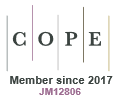Financial sustainability of HIV services for key populations in four countries in Asia: a mixed-methods study
James Tapa A B # , Matthew Kusen C # , Felicity Young D , Mike Merrigan D and Jason J. Ong
A B # , Matthew Kusen C # , Felicity Young D , Mike Merrigan D and Jason J. Ong  A B *
A B *
A
B
C
D
# These authors contributed equally to this paper
Handling Editor: Alissa Davis
Abstract
Key populations and their sexual partners account for 98% of new HIV infections in the Asia–Pacific region. Despite increased domestic funding for HIV programs, concerns persist about the sustainability of services for key populations as external donor programs wind down, potentially reversing progress and contributing to new infections. This study aims to understand structural, political and institutional barriers to domestic funding for key population–led HIV programming in these countries through diverse stakeholder perspectives, including limitations of procurement processes, budget allocation systems and political will.
A mixed methods approach was utilized, with 60 participants completing an online survey and 145 participating in key informant interviews across four countries in 2022. Stakeholders were categorized according to their organization (government, key population–led, non-government (NGO), and multilateral), with 30 stakeholders per country identified. The same respondents were targeted for quantitative and qualitative data collection.
Key informant interviews included 60 staff from government organizations, 42 from key population–led organizations, 31 from NGOs, and 12 from multilateral organizations. For the survey (n = 60), responses were from key population–led (35%), government (32%), NGOs (23%) and multilateral organizations (10%). Regarding the timeline for increased domestic financing for key population–led HIV services, 45% of participants thought it would take 5–10 years to expand them without reliance on external donors, 25% thought more than 10 years and 5% thought between 0 and 3 years. Almost all government and key population–led organization respondents in each country agreed on government funding or purchasing of community-based services across various HIV-related areas, including linkage to treatment and antiretrovirals (92%), HIV self-testing (95%), PrEP (80%), and stigma-reduction programs (92%). Although most supported the government funding community-based services/NGOs for delivering essential key population HIV services, 28.3% believed that existing laws and policies are in place for such funding, highlighting implementation gaps while knowledge and buy-in remain high.
This study underscores the importance of identifying realistic timelines with key national stakeholders when designing and deciding timelines for transitioning from international external donor support to domestic budgeting for key population–led HIV programming. It also highlights that although buy-in and understanding of key interventions is well known, there is a lack of sustained funding for these interventions that are essential to ending AIDS as a public health threat by 2030.
Keywords: Asia-Pacific, Bhutan, financial sustainability, HIV, key populations, Mongolia, Philippines, Sri Lanka.
References
3 Avert. HIV and AIDS in Asia & the Pacific regional overview 2020.. 2024. Available at https://www.avert.org/printpdf/node/415
5 AVERT. HIV and AIDS in Asia Pacific regional overview 2020. Available at https://www.aidsdatahub.org/
8 Gangcuangco LMA, Eustaquio PC. The state of the HIV epidemic in the Philippines: progress and challenges in 2023. Trop Med Infect Dis 2023; 8(5): 258.
| Crossref | Google Scholar |
10 Khandu L, Choida N, Drukpa J, Tsehring D, Wangdi S. Redefining the mode of HIV transmission through analysis of risk attribution among the reported HIV cases from 1993 to 2021 in Bhutan. AIDS Res Treat 2022; 2022: 2137164.
| Crossref | Google Scholar |
11 UNAIDS, UNICEF, WHO. HIV and AIDS data hub for Asia-Pacific: evidence to action: Philippines.; 2022. Available at https://www.aidsdatahub.org/country-profiles/philippines
14 UNAIDS, UNICEF, WHO. HIV and AIDS data hub for Asia-Pacific: evidence to action: Sri Lanka.; 2022. Available at https://www.aidsdatahub.org/country-profiles/sri-lanka
15 Health Equity Matters. Sustainability pulse check survey results October-November 2022.; 2022. Available at https://www.healthequitymatters.org.au/resources/sustainability-pulse-check-dashboard
19 Versteegh L, Amatavete S, Chinbunchorn T, Thammasiha N, Mukherjee S, Popping S, et al. The epidemiological impact and cost-effectiveness of key population-led PrEP delivery to prevent HIV among men who have sex with men in Thailand: a modelling study. Lancet Reg Health Southeast Asia 2022; 7: 100097.
| Crossref | Google Scholar |
20 Pudpong N, Viriyathorn S, Wanwong Y, Witthayapipopsakul W, Wangbanjongkun W, Patcharanarumol W, et al. Public contracting with civil society organizations for HIV/AIDS service provisions: a key strategy to ending AIDS in Thailand. J HIV/AIDS Soc Serv 2021; 20(4): 285-301.
| Crossref | Google Scholar |
23 Phanuphak N, Sungsing T, Jantarapakde J, Pengnonyang S, Trachunthong D, Mingkwanrungrung P, et al. Princess PrEP program: the first key population-led model to deliver pre-exposure prophylaxis to key populations by key populations in Thailand. Sex Health 2018; 15: 542-55.
| Crossref | Google Scholar |
24 Nguyen VTT, Phan HTT, Kato M, Nguyen Q-T, Le Ai KA, Vo SH, et al. Community-led HIV testing services including HIV self-testing and assisted partner notification services in Vietnam: lessons from a pilot study in a concentrated epidemic setting. J Int AIDS Soc 2019; 22: e25301.
| Crossref | Google Scholar |
26 Joint United Nations Programme on HIV/AIDS. Confronting discrimination: overcoming HIV-related stigma in health care settings and beyond.. 2017. Available at https://www.unaids.org/sites/default/files/media_asset/confronting-discrimination_en.pdf
27 Stangl AL, Lloyd JK, Brady LM, Holland CE, Baral S. A systematic review of interventions to reduce HIV-related stigma and discrimination from 2002 to 2013: how far have we come? J Int AIDS Soc 2013; 16(3S2): 18734.
| Crossref | Google Scholar |
28 Ren X, Xu J, Cheng F. Transition of HIV prevention in three Southeast Asian countries: challenges and responses to the withdrawal of the Global Fund funding. Glob Health J 2021; 5(4): 194-7.
| Crossref | Google Scholar |


